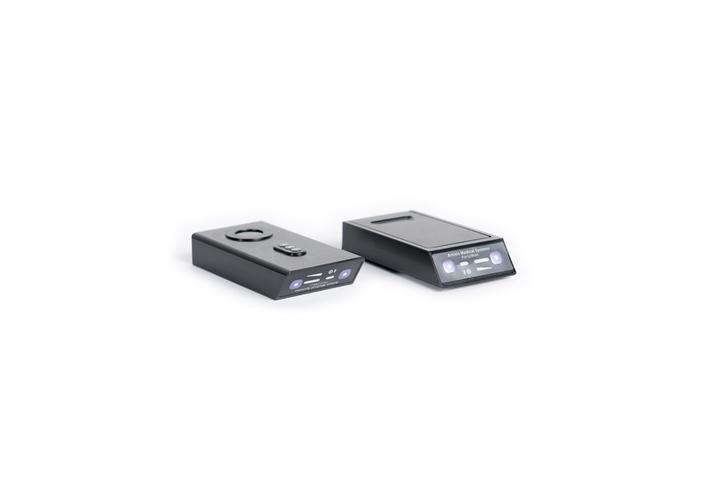PortaMon
The gold-standard research device for the measurement of muscle oxygenation

Publications using the PortaMon
Acute physiological responses during repeated sprint training with maximum end-expiratory breath-holds
Purpose Repeated sprint training in hypoxia (RSH) performed with voluntary hypoventilation at low lung volumes (RSH-VHL) has been proposed as an alternative to RSH. Recently, repeated sprint training combined with end-expiratory breath hold until the …
Effects of fractional inspired O$_textrm2$ on the O$_textrm2$ pathway during submaximal and maximal exercise in male endurance athletes
We utilized non-invasive methods and novel computational approaches to examine the effects of acutely varying fractional inspired O2 (FIO2) on convective and diffusive steps of O2 transport and muscle tissue (de)oxygenation during incremental cycling …
417PA pilot study to explore a non-invasive measure of mitochondrial dysfunction
Grip strength is a simple and inexpensive clinical test. However, by limiting measurement to the force of an isolated contraction, we are missing functionally, and mechanistically relevant information. Skeletal muscle ATP consumption can increase …
418PSafety and efficacy of ultrasound-guided nerve block in muscle biopsy
While local anesthesia remains standard for muscle biopsies, it often inadequately controls procedural pain. General and spinal anesthesia carry risks in neuromuscular disorders. Ultrasound-guided nerve block may reduce the risk of anesthetic …
419PBaseline characteristics of patients with congenital myopathies from a 2-year prospective natural history study (READYCOM)
Congenital myopathies (CM) are a group of rare hereditary muscle diseases defined by characteristic abnormalities on muscle biopsy. The most prominent clinical features are generalized muscle weakness often pronounced axially, variable …
420PMeasurable difference neutral vertical head/trunk control between children with neuromuscular disorders and typically developing children
This observational cross-sectional study investigated the sensitivity of the Segmental Assessment of Trunk Control (SATCo) to detect differences in neutral vertical (NV) head and trunk control between children with neuromuscular disorders (NMD) and …
Adaptations in maximal oxygen consumption and lower-limb muscle oxygen extraction capacity following 4 months of moderate-intensity training in Parkinson's disease: a pilot study
Training-induced increment in maximal oxygen consumption (V̇O₂max) derives from central and peripheral cardiovascular adaptations in healthy individuals. Whether such a response is altered in Parkinson’s disease (PD), a condition that may cause …
Aging Impairs Cortical and Muscular Oxygenation during Aerobic Exercise: A Near-Infrared Spectroscopy Study
Introduction Near-infrared spectroscopy (NIRS) offers valuable insights into exercise performance and enables the investigation of cerebral and muscular hemodynamic impairments associated with aging. This study aimed to examine cerebral and muscular …
Effect of an acute bout of endurance eccentric exercise on exerkines production in healthy males
Purpose Strength-related exerkines may be promoted in response to exercise imposing high mechanical stress on the skeletal muscles. For a constant velocity, the inclination of the slope during downhill exercise influences the total mechanical load. …
Effects of exercise intensity on post-exercise oxygen consumption of the vastus lateralis
Post-exercise muscle oxygen consumption rate (mVO2) may contribute to understanding responses to and recovery from exercise. Purpose: To measure post-exercise mVO2 of the vastus lateralis (VL) muscle after various exercise intensities using …
The energy cost of cyclic muscle contractions at different initial muscle-tendon unit lengths derived from near-infrared spectroscopy
During locomotion, the plantarflexor muscle fascicles appear to operate on the ascending limb of its maximal force-length relationship, producing less force per unit activation and elevating the energy cost (EC) compared to contractions performed at …
The use of far-infrared-re-emitting patches during and after a short trail run does not influence the energy cost and the maximal force decrement, but does reduce perceived fatigue
Purpose The objective of this randomized, single-blind, crossover study was to determine whether patches re-emitting far-infrared radiation (FIR) affect the energy cost of running (ECR) and the maximal isometric force during and after a short trail …
Twelve-week nitrate-rich beetroot extract supplementation improves lower limb vascular function and serum angiogenic potential in postmenopausal women
Postmenopausal women exhibit impaired lower limb vascular function and reduced angiogenic capacity, increasing cardiovascular risk. This study demonstrates that 12 wk of nitrate-rich beetroot extract supplementation enhances femoral artery …
Assessing the feasibility of near-infrared spectroscopy for evaluating physiological exercise thresholds
To examine the feasibility of using near-infrared spectroscopy (NIRS) for physiological threshold detection and whether NIRS-derived parameters differ between highly-trained and less-trained cyclists. Twenty-seven male cyclists were divided into: …
Cardiorespiratory and oxygenation responses in iron-deficient anemic women during whole-body exercise under moderate hypoxia
Purpose Integrated physiological responses during maximal whole-body exercise, such as cycling, under additive hypoxemia (anemia + hypoxia) are not adequately studied. Therefore, we investigated cardiovascular, muscular and cerebral oxygenation …
Change in mitochondrial capacity in elite triathletes, cyclists, and wrestlers over a training period of 28 days
Purpose This study investigated the change in mitochondrial capacity and VO2max in elite triathlon, cycling, and Greco-Roman wrestling athletes over a 28-day training period. Methods Sixteen elite athletes (23 ± 2.5 years; 176 ± 6 cm; 76 ± 8 kg; 65 ± …
Commuting by bicycle (vs. by car) is associated with improved aerobic power, microvascular function and diminished CO$_textrm2$ output in the atmosphere
The study investigated whether bicycle compared with car commuting, over relatively small distances, has positive effects on physiological variables, cardiometabolic fitness and CO2 output in the atmosphere. Bike Commuters (11 M, 15 F; age [median …
Comparison of peripheral tissue perfusion and calf pump function in women with mild/moderate and severe chronic venous disease symptom intensity
Objective To compare calf muscle function and peripheral tissue perfusion in women with chronic venous disease (CVD) with mild/moderate and severe symptoms. Methods A cross-sectional study included women with CVD classified in stages C1, C2, and C3. …
Exploring the limits of exercise capacity in adults with type II diabetes
Objective This study investigates the mechanisms behind exercise capacity in adults with type 2 diabetes mellitus (T2DM), focusing on central and peripheral components, as described by the Fick equation. Methods A cross-sectional study of 141 adults …